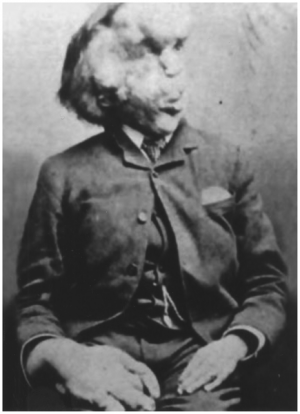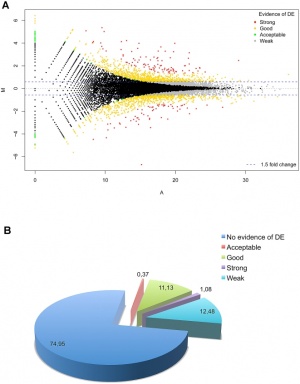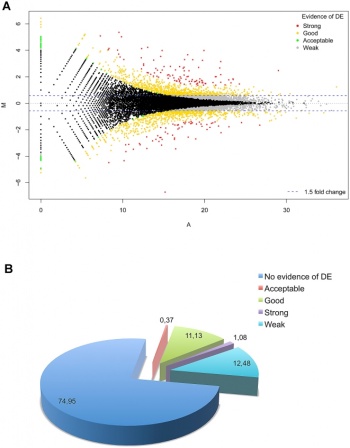User:Z3290689
Lab 4 Online Assessment
- The allantois, identified in the placental cord, is continuous with what anatomical structure?
- Identify the 3 vascular shunts, and their location, in the embryonic circulation.
- Identify the Group project sub-section that you will be researching. (Add to project page and your individual assessment page)
Laboratory Sessions
Attendance
--Z3290689 12:58, 28 July 2011 (EST)
--z3290689 12:00, 4 August 2011 (EST)
--z3290689 11:33, 11 August 2011 (EST)
--z3290689 13:00, 18 August 2011 (EST)
--z3290689 12:00, 25 August 2011 (EST)
--z3290689 11:11, 1 September 2011 (EST)
--z3290689 11:10, 15 September 2011 (EST)
--z3290689 11:49, 22 September 2011 (EST)
Online Assignments
Laboratory Session 1
Identify the origin of In Vitro Fertilization and the 2010 nobel prize winner associated with this technique.
The first successful use of In Vitro Fertilization as an assisted reproductive technology occurred in 1978 under the direction of Robert D. Edwards, et al with the birth of Louise Brown. In 2010, Robert D. Edwards received the Nobel Prize in Physiology or Medicine "for the development of in vitro fertilization."
Identify a recent paper on fertilisation and describe its key findings.
Eskander R.N., Randall L.M., Berman M.L., Tewari K.S., Disaia P.J., Bristow R.E. (2011). Fertility preserving options in patients with gynecologic malignancies. American Journal of Obstetrics & Gynecology, doi: 10.1016/j.ajog.2011.01.025 The key findings of this paper were that given the rising median age of primiparous women - when correlated with the median age of diagnosis of cervical, endometrial and ovarian cancer - exhibited a trend whereby a higher portion of nulliparous women would be diagnosed with conditions which could potentially severely reduce fertility. Consequently, there is increased pressure on obstetricians to offer non-standard treatments with higher risks to patients wishing to retain the option to bear children.
Identify 2 congenital anomalies.
Neurofibromatosis and Cystic Fibrosis:
- Neurofibromatosis is a condition presenting with diffuse tumour growth in nervous tissue, often presenting superficially with raised welts.
- Cystic Fibrosis is a disease in which electrolyte balance, regulation and transport is compromised due to the absence of a certain protein. Signs and symptoms are numerous and varied.
--z3290689 12:34, 4 August 2011 (EST)
Laboratory Session 2
Identify the ZP protein that spermatozoa binds and how is this changed (altered) after fertilisation.
ZP3 and ZP4 are the first proteins to bind to sperm, inducing the acrosome reaction. After induction of the acrosome reaction, ZP2 binds spermatozoa and is cleaved, causing conformational change of ZP3 that prevents polyspermy.
Congenital Hypomyelinating Neuropathy:
Feltri M.A., et al (2000). P0 Glycoprotein Overexpression Causes Congenital Hypomyelination of Peripheral Nerves. The Journal of Cell Biology 148(5), 1021-1034
This article addresses the role of the Myelin protein zero gene in regulating the levels of P0 protein, and the resulting degrees of either hypo- or hyper-myelination.
--z3290689 21:14, 7 August 2011 (EST)
Laboratory Session 3
What is the maternal dietary requirement for late neural development?
Iodine. --z3290689 17:10, 16 August 2011 (EST)
File:Differentially expressed RefSeq genes in human trisomy 21
Laboratory Session 4
The allantois, identified in the placental cord, is continuous with what anatomical structure?
The allantois is continuous with the superior end of the developing bladder.
Identify the 3 vascular shunts, and their location, in the embryonic circulation.
In the heart lies the foramen ovale, joining the atria to prevent blood travelling to the lungs for oxygenation.
Within the aortic arch lies the ductus arteriosus, connecting it to the pulmonary artery.
Ductus venosus is found in the liver and connects the umbilical and portal veins to the IVC.
--z3290689 19:35, 24 August 2011 (EST)
Identify the Group project sub-section that you will be researching.
I'll do Aetiology of Fragile X Syndrome --Boris Zolotarev 10:38, 25 August 2011 (EST)
Laboratory Session 5
--z3290689 11:26, 25 August 2011 (EST)
Which side (L/R) is most common for diaphragmatic hernia and why?
The majority of congenital diaphragmatic herniations are Bochdalek hernations and the majority of Bochdalek herniations occur on the posterior left side. They occur as a result of the pleuroperitoneal foramen's failure to close, allowing the viscera to enter the thorax. --z3290689 13:26, 26 August 2011 (EST)
Laboratory Session 6
What week of development do the palatal shelves fuse?
Week 7 is when the palatal shelves fuse.
What animal model helped elucidate the neural crest origin and migration of cells?
Chicken embryos were utilized to determine neural crest origin/cell migration.
What abnormality results from neural crest not migrating into the cardiac outflow tract?
Tetralogy of Fallot
Laboratory Session 7
Are satellite cells (a) necessary for muscle hypertrophy and (b) generally involved in hypertrophy?
Satellite cells are not necessary for muscle hypertrophy, but when they are present they are in fact actively involved.
Why does chronic low frequency stimulation cause a fast to slow fibre type shift?
Satellite cells are involved in maintaining long-term stability of activity-induced transitions between fibre types. Chronic low frequency stimulation triggers satellite cell activity, resulting in the shift from fast to slow muscle fibre types.
Laboratory Session 8
Peer Reviews
Group 1
- Broad scope of the topic is covered both textually and pictorially.
- Could possibly use more references at the beginning. Referencing was otherwise entirely suitable, very in-depth.
- Own diagrams were used; easily understandable.
- The distribution of information within headings made for very smooth reading; each facet of the topic was introduced in a logical, sequential manner.
- Inclusion of current and future research was interesting.
- "Treatment" section may have been ordered better, perhaps in terms of corrections of physical appearance vs. physiological abnormalities.
- Some errors in grammar and punctuation were noted, but only with directed reading.
Group 2
- Many of the pictures do not have a legend/explanation associated with them. However, the hand-drawn picture is underscored by a legend.
- The introduction is rather abrupt; definition of "congenital disorder" could have been a simple hyperlink or a note in the glossary.
- Is the historical background necessary? In the section, the photo of the two people is not explained.
- Section on epidemiology seems to cross over significantly with clinical manifestations.
- Thorough referencing throughout. However, some of the references appear strangely in the references section (could be a vestige of that crash a few weeks earlier?)
- The table in clinical manifestations is strangely.....implied. Section on Tetralogy of Fallot can be cleaned up in terms of layout.
- Inclusion of current and future research is noted, and well set out/referenced.
- Glossary is thorough.
- Overall, a very thorough and broad exploration of the topic.
Group 3
- Picture under "management" is not explained.
- Introduction properly touches on all the topics elucidated later without crossing over too much.
- History is made relevant, linking it to Signs and Symptoms as well as Aetiology.
- Pathogenesis needs more references, as could Signs and Symptoms.
- The layout of Diagnosis At Birth is peculiar.
- Signs and Symptoms could use more demonstrative pictures.
- Glossary is fairly comprehensive.
- Use of related diseases section is interesting, but perhaps should be included within Diagnosis under "Differential diagnoses" or something similar....
Group 4
- Introduction does well in that it briefly addresses each of the facets of the topic that follow.
- Relevance of each historical point in the timeline is not adequately explained.
- Use of the table to show epidemiology is very nicely set up.
- Epidemiology is very much at the level required, delving into specific research details.
- You misspelled "Huntington" in "Huntingtin Gene". Really?
- Image error in the Molecular Mechanisms section. Remaining picture is very comprehensive though.
- Could potentially use more references in the Molecular Mechanisms section; otherwise decently referenced.
- The Diagnostic tests aren't actually mentioned, only their significance is outlined.
- "Neuropathology" section is not properly titled - it seems to be a subset of the Video section (which, incidentally, can probably be moved within Clinical Manifestations)
- Medication table is very nicely set out.
- Picture in Current/Future research (mouse/person/etc) seems irrelevant, and is not actually explained.
- Glossary is thorough


